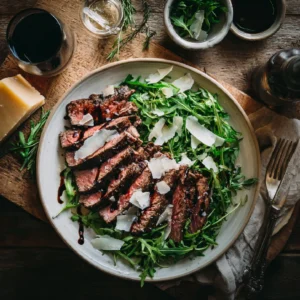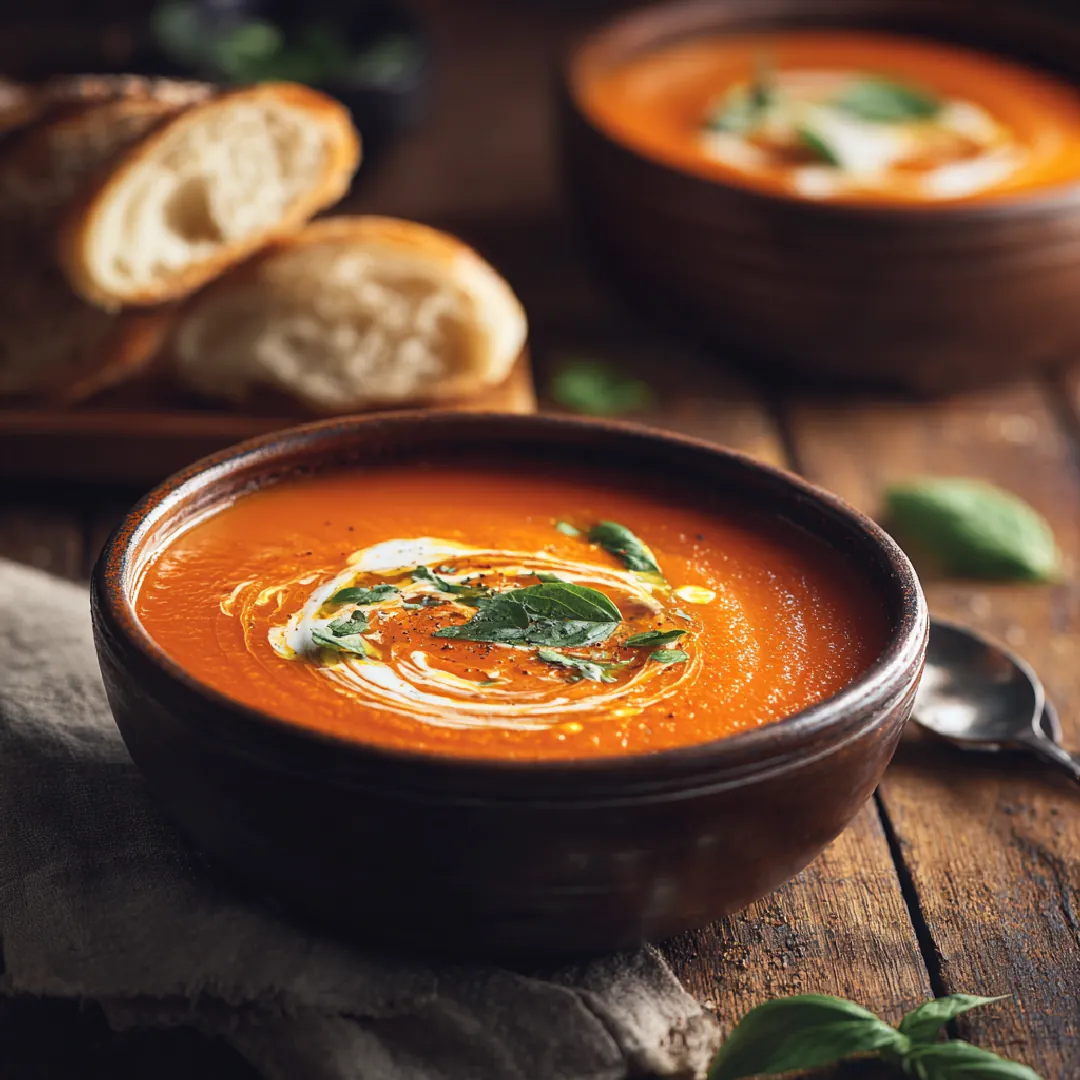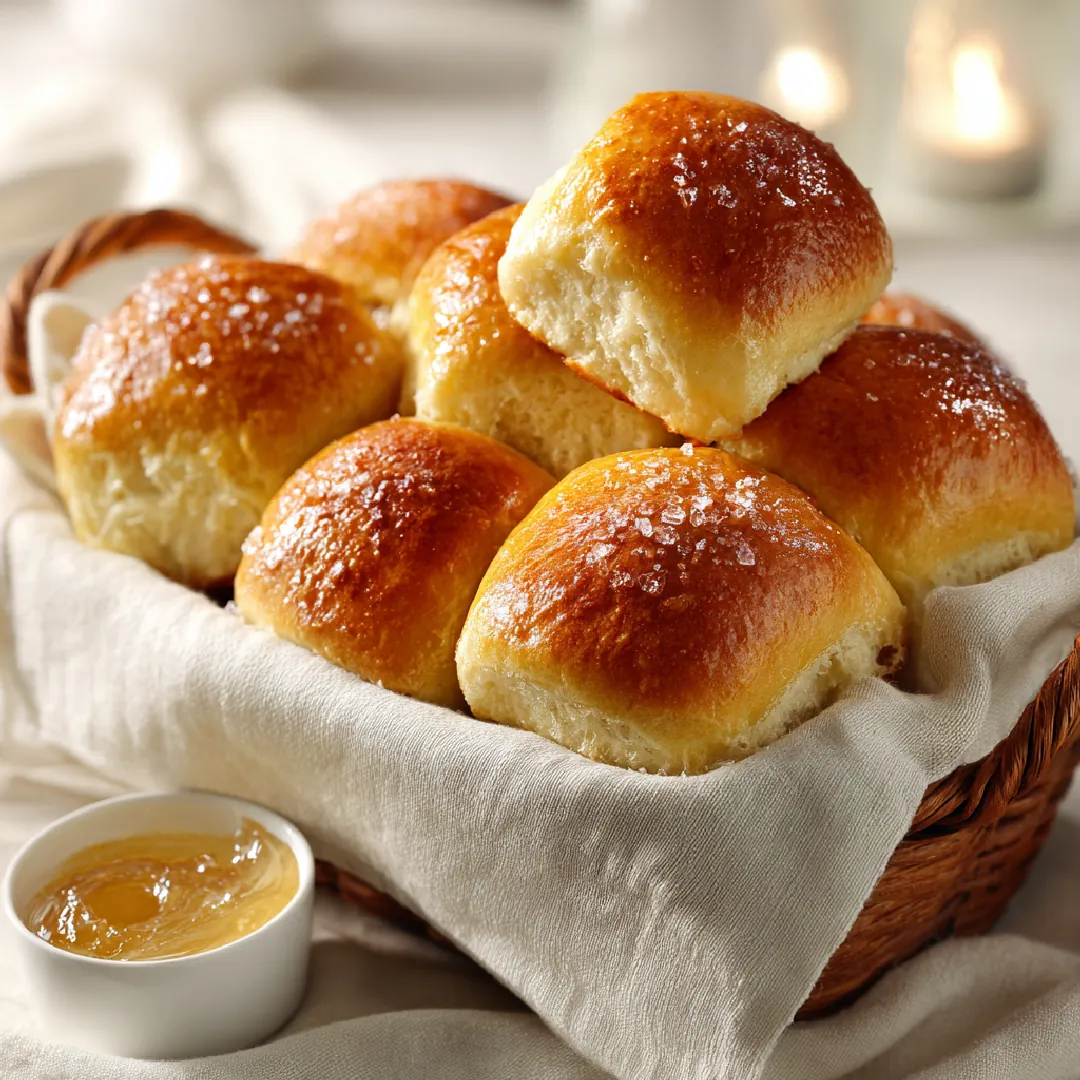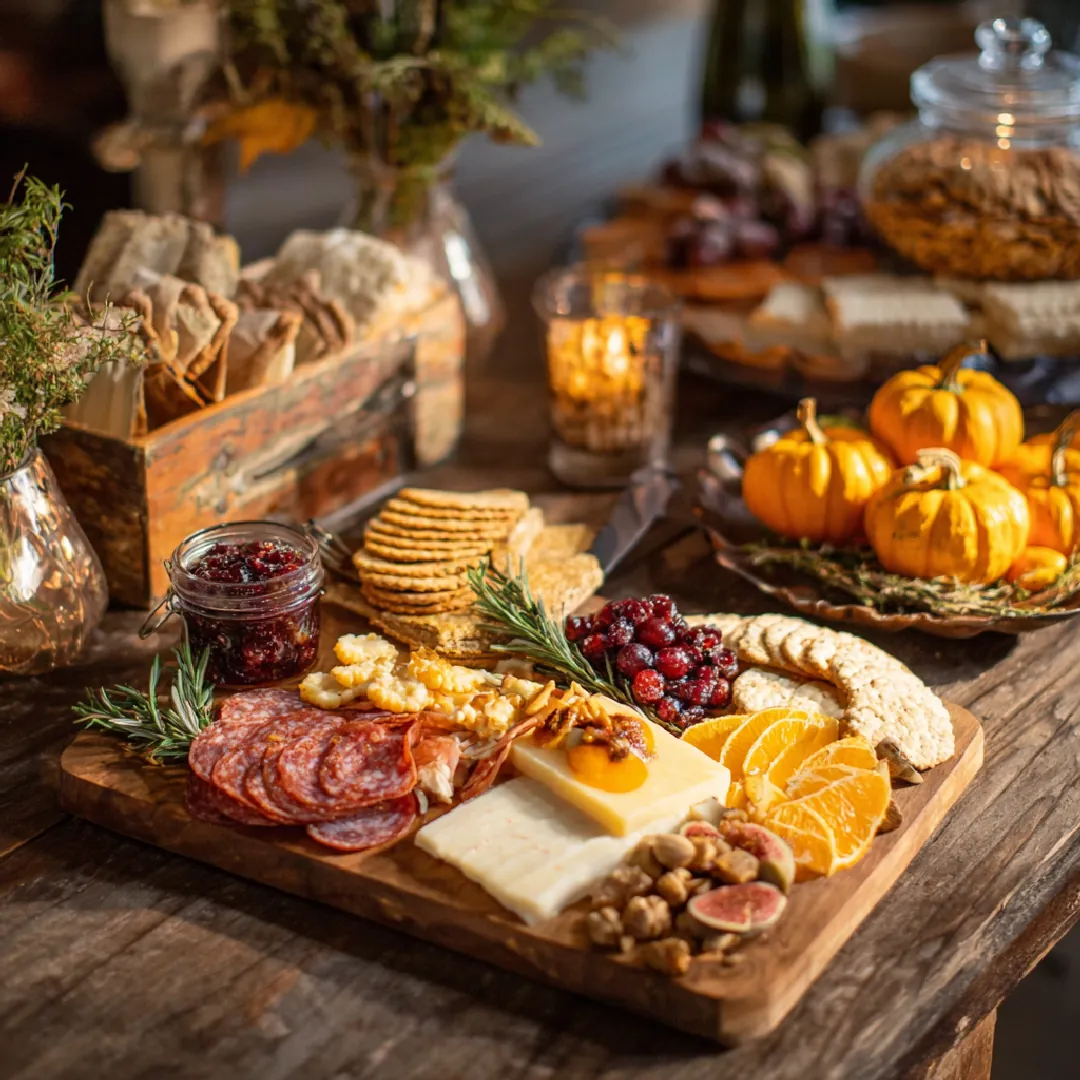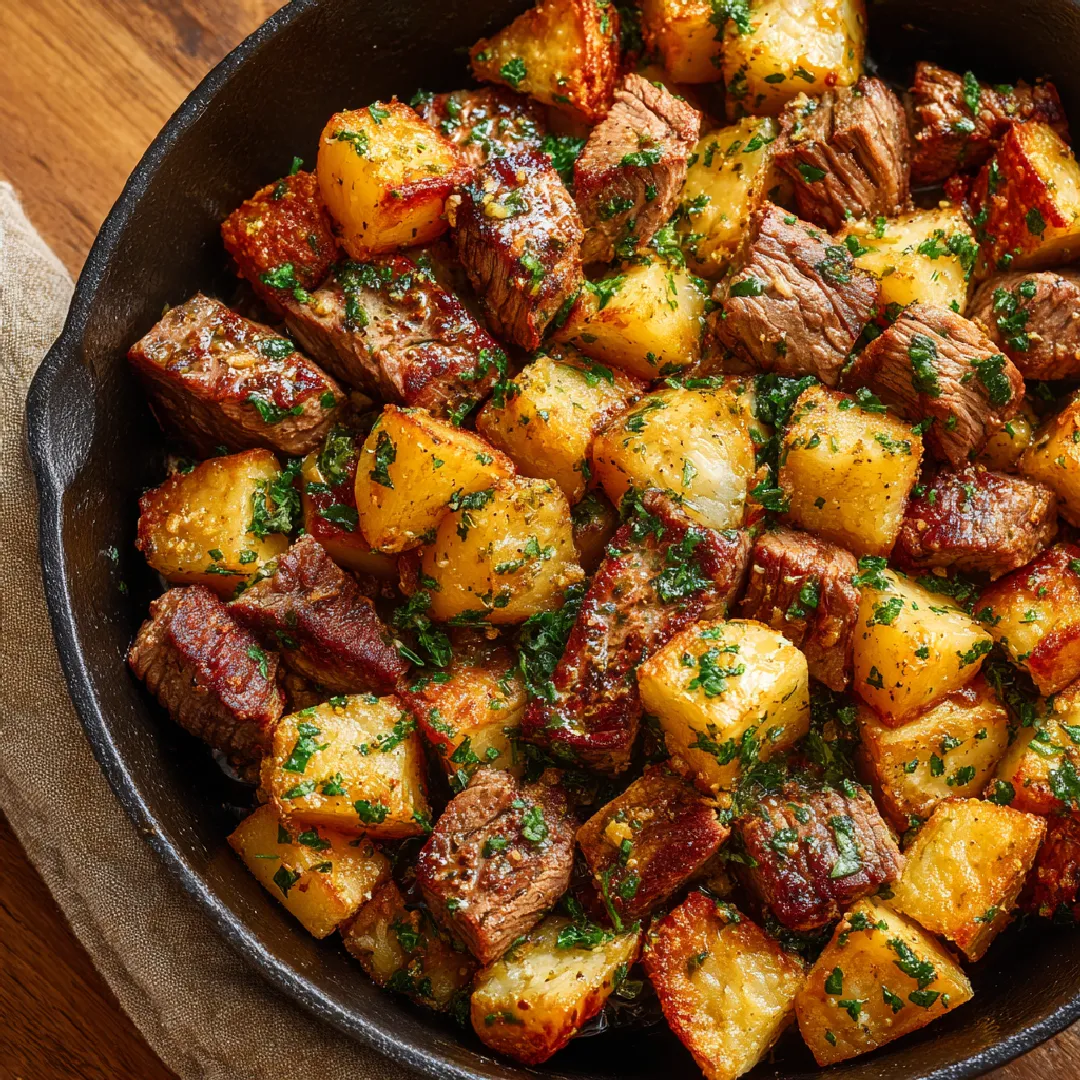The Story Behind Bavette Steak Tagliata
A Rustic Italian Dish Meets Underrated Steak Cut
Hi, I’m Saly. I’m a wife, a home cook, and someone who’s learned that cooking doesn’t have to be complicated to be Delicious. One evening, I found myself with a beautifully marbled bavette steak and a craving for something comforting yet elegant. That’s when I remembered an old favorite from our trip to Tuscany — tagliata di manzo, or “sliced steak.” Simple, fast, and bursting with flavor.
Bavette steak tagliata is now one of our go-to dinners. My husband — a true food lover — noticed how perfectly this cut absorbed the seasoning and how tender it turned out when sliced against the grain. The word tagliata comes from tagliare, which means “to cut” in Italian, and that’s really all it takes: a good sear, a sharp knife, and a few fresh ingredients to finish.
This dish has a way of making a regular night feel a little more special. Pair it with some peppery arugula, thin curls of Parmigiano, and a drizzle of high-quality olive oil, and you’ve got a plate that feels straight from a trattoria. The bavette cut, often overlooked, shines when treated right — and that’s exactly what this recipe does.
If you’re new to bavette, it’s similar to flank but juicier. The best part? It cooks in under 15 minutes, just like these honey-glazed steak strips, but with a totally different flavor profile.
Table of Contents
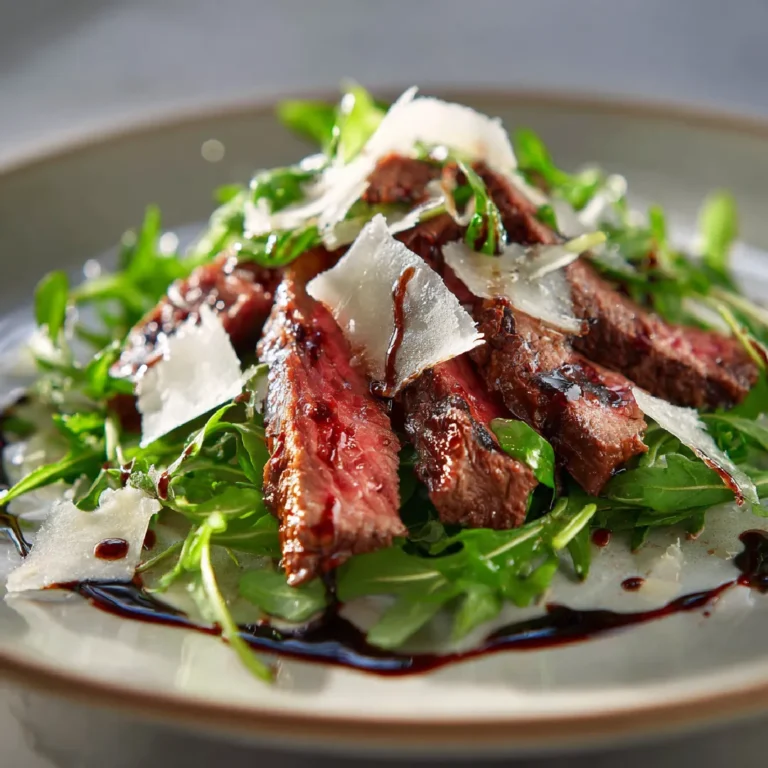
Bavette Steak Tagliata
Bavette steak tagliata is a quick and flavorful Italian dish made with seared bavette steak, peppery arugula, Parmigiano Reggiano, and a drizzle of balsamic.
- Total Time: 20 minutes
- Yield: 2 servings 1x
Ingredients
1 lb bavette steak (bottom sirloin flap)
Kosher salt and cracked black pepper to taste
1 tbsp olive oil
1 clove garlic, crushed
1 sprig rosemary (optional)
3 cups baby arugula
1/2 lemon, juiced
1/2 tbsp balsamic vinegar
6 tbsp shaved Parmigiano Reggiano
Flaky sea salt for finishing
Instructions
1. Pat the bavette steak dry and season generously with salt and pepper.
2. (Optional) Rub with olive oil, garlic, and rosemary. Let sit at room temp 30 minutes.
3. Heat a cast iron skillet or grill over high heat until smoking hot.
4. Sear steak for 3–4 minutes per side for medium rare.
5. Remove from heat and rest for 5–7 minutes, loosely covered with foil.
6. Toss arugula with lemon juice and a drizzle of olive oil.
7. Slice steak thinly against the grain.
8. Plate arugula, top with shaved Parmigiano.
9. Layer sliced steak over greens, sprinkle with flaky sea salt.
10. Finish with balsamic vinegar and a final drizzle of olive oil.
Notes
Slice the steak against the grain for tenderness.
Use Maldon or flaky sea salt for finishing touches.
Optional: Add grilled cherry tomatoes or roasted vegetables for variety.
- Prep Time: 10 minutes
- Cook Time: 10 minutes
- Category: Main Course
- Method: Grilled or Pan-Seared
- Cuisine: Italian
Nutrition
- Serving Size: 1 plate
- Calories: 425
- Sugar: 1g
- Sodium: 720mg
- Fat: 26g
- Saturated Fat: 10g
- Unsaturated Fat: 14g
- Trans Fat: 0g
- Carbohydrates: 5g
- Fiber: 1g
- Protein: 40g
- Cholesterol: 85mg
Choosing and Preparing the Bavette Steak
What Kind of Meat is Bavette Steak?
Bavette steak tagliata begins with understanding the cut. Bavette steak, also known as the bottom sirloin flap, is a flavorful, lesser-known cut with a texture perfect for slicing — just what you want for tagliata. It often gets confused with flank steak, but it’s more tender and slightly fattier, which makes it a better choice when seared quickly and sliced across the grain.
For making bavette steak tagliata, that texture is key. It locks in juices when cooked hot and fast and delivers a beautifully beefy bite when served medium rare. This cut is affordable, easy to cook, and incredibly versatile. It’s one of those butcher’s secrets that’s finally getting the recognition it deserves.
Not sure where to find bavette? Your local butcher or specialty market likely carries it. And if you’re into beef-forward dishes, you might also enjoy this bold and saucy beef bavette steak recipe, a close cousin to our tagliata preparation.
Prepping and Marinating the Steak
To make the perfect bavette steak tagliata, start by patting your steak dry to ensure a golden crust when it hits the pan. Generously season it with kosher salt and cracked pepper. A quick marinade using olive oil, rosemary, and garlic adds an herby depth without overpowering the meat’s natural flavor.
Since the goal is a clean, seared exterior with a pink, juicy center, let the steak sit at room temperature for 30 minutes before cooking. That ensures it cooks evenly from edge to edge. You’ll want to heat a cast-iron skillet or grill until it’s screaming hot — that’s how you get the crispy, caramelized crust that makes bavette steak tagliata so irresistible.
Need a cozy dish to pair it with? You could plate it next to something satisfying like our potato and chicken casserole or even balance it . It’s more flexible than you’d think.
If you’re someone who likes balancing bold meat flavors with something bright, this steak pairs well with lighter, unexpected sides like cottage cheese baked eggs or even with something lighter like mochi buttermilk pancakes for a savory, sweet, or fusion-style brunch.
Cooking and Slicing Like a Pro
How to Perfectly Cook Bavette Steak for Tagliata
Now that your steak is seasoned and rested, it’s time to cook your bavette steak tagliata like a pro. The best method? High heat, minimal flipping, and confidence. Whether you’re using a grill or cast-iron skillet, preheat until it’s almost smoking. This cut thrives with a hard sear, developing a crispy, savory crust in just minutes.
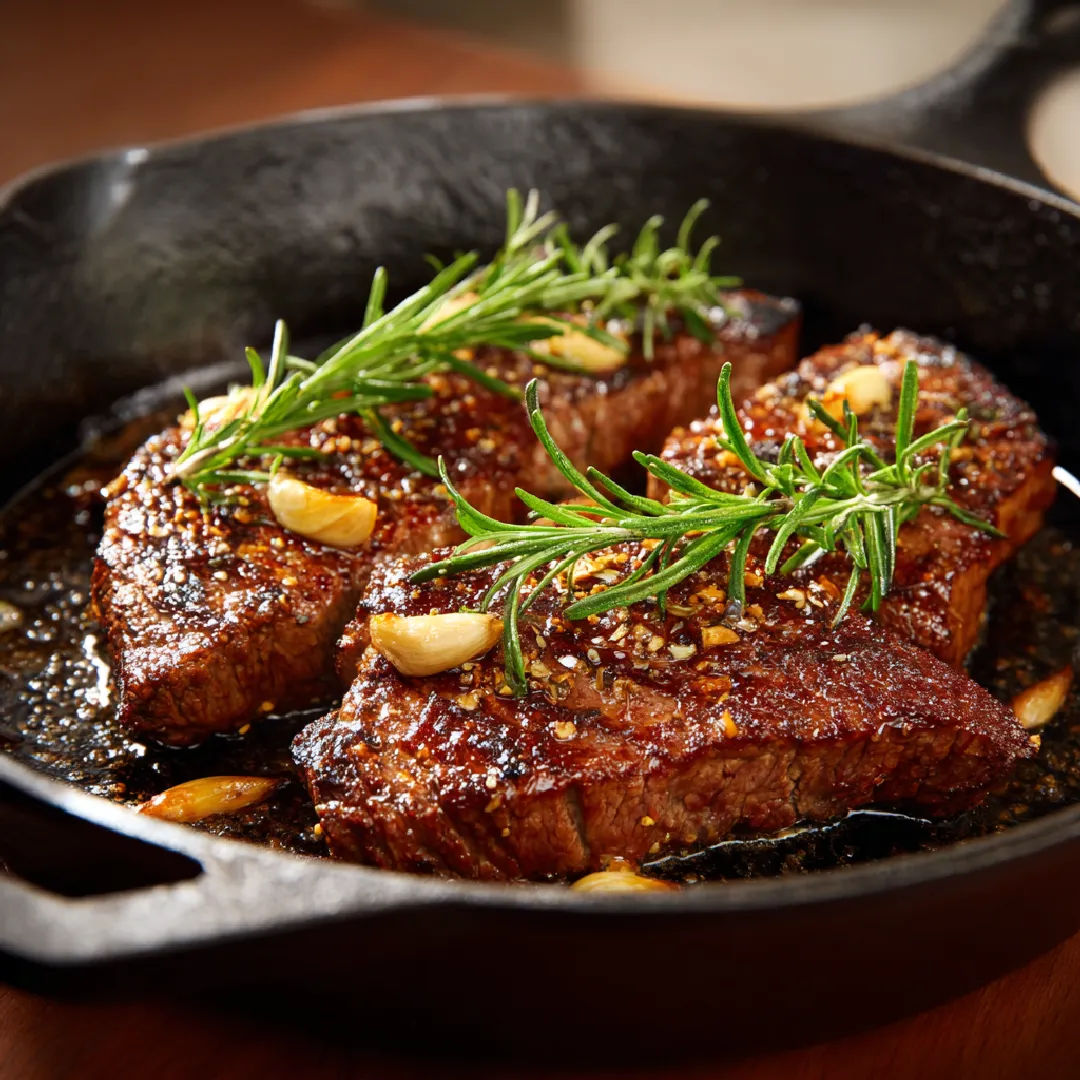
Place the bavette steak on the hot surface and cook for about 3–4 minutes per side for medium-rare, depending on thickness. You’re looking for a rich brown crust on the outside with a warm, red center. Don’t press it down. Let the heat do the work. Use a meat thermometer if needed — 130–135°F is the sweet spot for juicy perfection.
Once seared, the secret is resting. Let the steak sit for at least 5–7 minutes on a cutting board tented with foil. This allows juices to redistribute, preventing a dry center and locking in moisture.
The “Tagliata” Cut: Slicing Against the Grain
The essence of bavette tagliata is in the slice. Once your steak is rested, place it on a cutting board and identify the grain — the visible lines running through the meat. Use a sharp knife to slice across the grain at a slight angle, about ¼ inch thick. This shortens the muscle fibers, giving you that melt-in-your-mouth feel even from this fibrous cut.
If sliced with the grain, bavette can feel chewy or tough — and no one wants that. But when you cut it correctly, you unlock the true potential of this underrated steak. Each slice should be thin, glistening, and ready to soak up every drop of balsamic and olive oil on your plate.
Want to keep the plating rustic and elegant? Fan the slices over a bed of arugula or roasted veggies to round out a dinner that hits all the right notes.
Bavette steak tagliata isn’t just about flavor — it’s about feel. The knife work, the texture, the way the meat catches the light. That’s what makes this dish not only delicious but memorable.
Serving & Pairing the Tagliata
Classic Italian Presentation: Arugula, Parmigiano, Balsamic
Once your bavette steak tagliata is perfectly sliced, it’s time for the final flourish. Tagliata is traditionally served over a simple yet flavorful arugula salad. The peppery bite of arugula balances the richness of the beef, while thin shavings of Parmigiano Reggiano add depth. Drizzle with the best extra virgin olive oil you have, then finish with a few drops of aged balsamic vinegar.
Don’t skip the finishing salt. A pinch of flaky Maldon salt or coarse sea salt over the sliced steak enhances each bite. Arrange everything on a large platter or two rustic plates. Place the steak slightly overlapping over the greens, and garnish with more cheese if you’re feeling generous.
If you’re feeling creative, consider adding grilled cherry tomatoes or even a poached egg on top. It’s an elevated twist that still keeps things wonderfully Italian — much like turning a traditional dessert into something new, like this blueberry buttermilk pancake casserole.
Perfect Sides to Serve with Bavette Steak Tagliata
A classic bavette steak tagliata dinner doesn’t need much on the side — but the right additions can make the meal feel truly complete. Start with something warm and rustic like roasted baby potatoes tossed with rosemary and sea salt. Their golden edges and fluffy centers pair beautifully with the juicy slices of steak.
Want a touch of comfort? Try a creamy mashed potato or garlic-parmesan polenta to bring richness and balance to the plate. Grilled seasonal vegetables like zucchini, asparagus, or blistered cherry tomatoes also make bright, fresh companions to the meat.
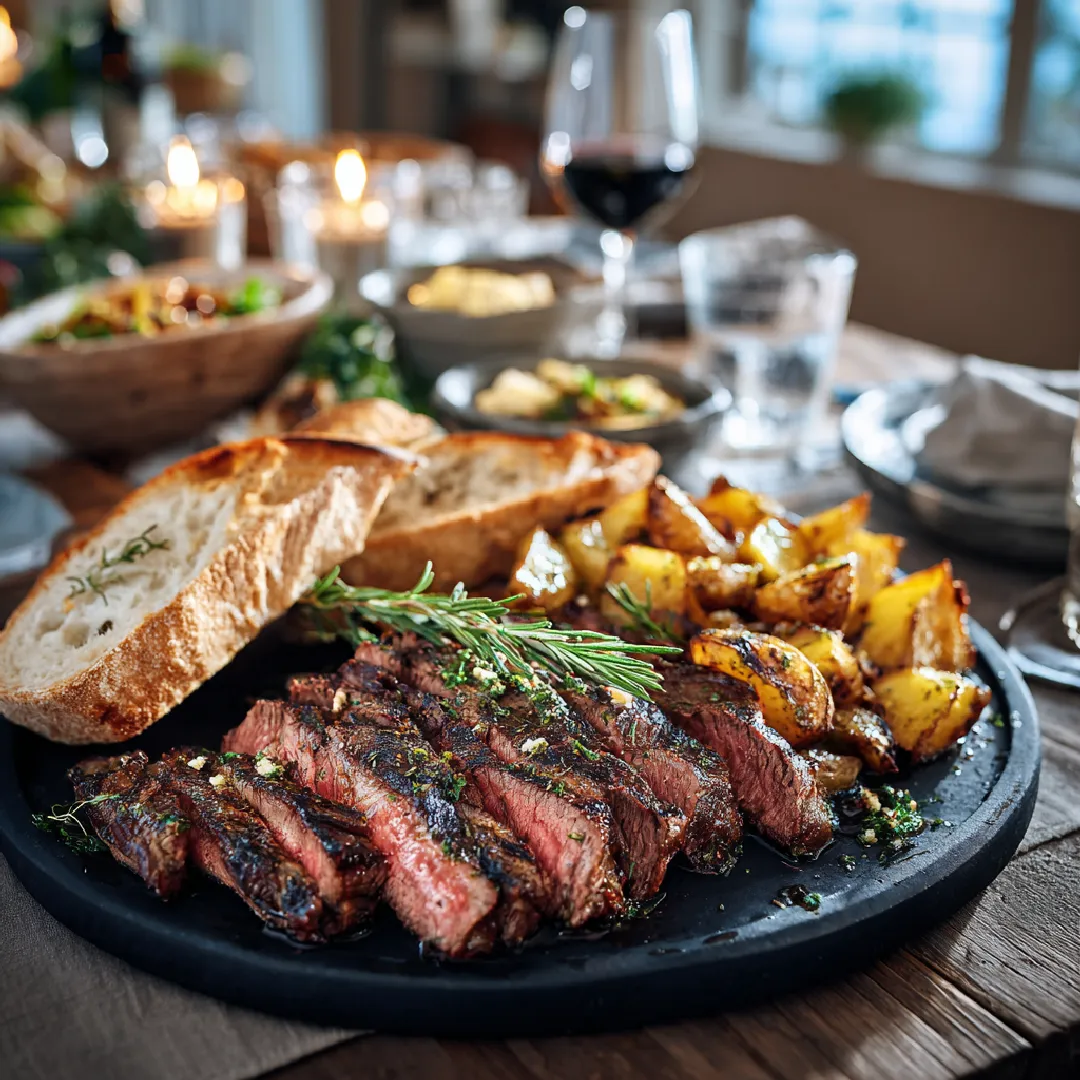
If you’re serving this as a weekend centerpiece, add a loaf of crusty bread or focaccia to soak up those savory juices and balsamic drizzles. It’s the kind of detail that turns a simple dish into a family favorite.
Prefer something a little more unique? A small side of lightly dressed lentil salad or roasted cauliflower can add an earthy counterpoint without stealing the spotlight.
Bavette steak tagliata sits perfectly between rustic and refined. With just a few well-chosen sides, it feels at home on both a casual Tuesday table and a special weekend spread.
Hungry for more? Be sure to join me on Facebook and Pinterest to keep the inspiration going.
Frequently Asked Questions
What is the best cut of beef for tagliata?
Traditionally, tagliata uses sirloin or striploin, but bavette steak is an excellent alternative. It’s flavorful, affordable, and delivers great texture when sliced properly. Its open grain and rich marbling make it perfect for high-heat searing and thin slicing.
Is bavette a good cut of steak?
Yes, bavette is a fantastic cut — especially for dishes like tagliata. It offers a bold beef flavor and tender bite when cooked to medium-rare and sliced against the grain. It’s a butcher’s favorite that’s finally getting the attention it deserves.
What kind of meat is a bavette steak?
Bavette steak comes from the bottom sirloin, also known as the flap. It’s a long, flat cut with visible muscle fibers and excellent marbling. Though often mistaken for flank steak, bavette is more tender and flavorful, especially when prepared correctly.
Is a bavette steak tough?
Bavette steak isn’t tough when cooked and sliced properly. The key is to cook it quickly over high heat and always cut across the grain. This breaks up the muscle fibers and creates a tender, juicy bite — perfect for tagliata-style servings.
Final Note
If you’ve never tried bavette steak tagliata, this is your sign. It’s fast, flavorful, and makes the most of an underrated cut that deserves a place in your regular rotation. With just a handful of ingredients and a little know-how, you can serve something that feels elevated but remains grounded in simplicity.
From the sizzling sear to the final drizzle of balsamic, every step brings out the best in bavette. And when you pair it with peppery greens or rustic sides, it turns into a meal that’s both comforting and impressive.
Whether you’re cooking for a quiet weeknight or setting the table for someone special, bavette steak tagliata brings something real to your kitchen — flavor, joy, and maybe even a little applause.
Now that you’ve got the method down, why not make it your own? Add your favorite sides, play with herbs, and let your home cooking tell its own story — just like mine.

